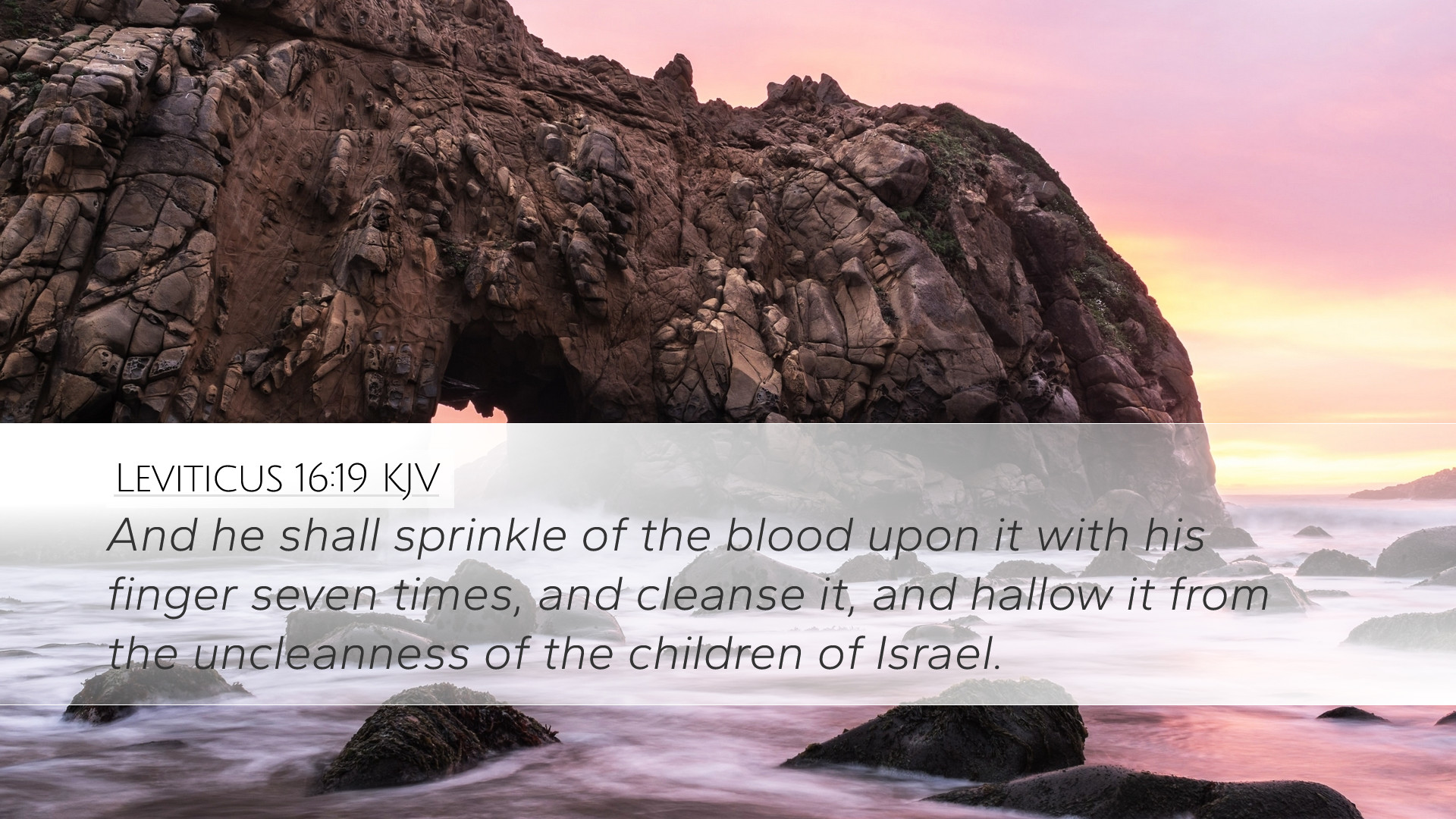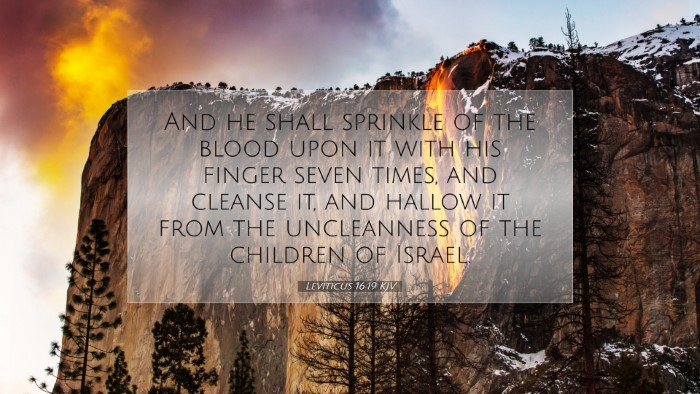Commentary on Leviticus 16:19
Leviticus 16:19 states: "And he shall sprinkle of the blood upon it with his finger seven times, and cleanse it, and hallow it from the uncleanness of the children of Israel." This verse is a critical part of the Day of Atonement rituals, reflecting profound theological implications regarding sin, purification, and atonement in the Israelite community.
The Significance of the Blood
Matthew Henry notes the importance of blood in biblical rituals, symbolizing life and atonement. In this verse, the act of sprinkling blood represents the covering of sin and the beginning of purification. The number seven, often associated with completion and divine perfection, emphasizes the thoroughness of this cleansing act.
Albert Barnes adds that the blood serves as a means to appease God's wrath against sin, pointing to the essential belief that without the shedding of blood, there is no remission of sins (Hebrews 9:22). The specific act of cleansing the altar signifies that both the people and their worship must be purified to approach God.
Understanding Purification
Adam Clarke highlights the ritualistic elements of Leviticus, noting that the physical actions represent spiritual truths. The act of cleansing is not merely a physical task, but a profound statement of humanity's need for divine intervention to address the problem of sin. Clarke emphasizes that the focus on the altar underscores the necessity of a proper relationship with God, where worship must be predicated on purity.
The Role of the High Priest
This event takes place within the larger context of the rituals performed by the High Priest on Yom Kippur, the Day of Atonement. Matthew Henry elaborates that the High Priest acts as a mediator between God and the people, entrusted with carrying out these sacred duties to restore the covenant relationship. This practice foreshadows the ultimate High Priest, Jesus Christ, whose sacrifice ensures a permanent atonement for sins.
Lessons for Today
For modern readers, this verse encourages deep reflection on the nature of sin and the necessity of purification. The ritual emphasizes that reconciliation with God involves acknowledging one's faults and earnestly seeking his cleansing grace. Albert Barnes suggests that the repeated action of sprinkling conveys a theological message: God's grace can cover any sin a believer brings before him.
Reflection on Cleansing and Worship
- The act of cleansing also serves as a metaphor for the believer's life today. It is a reminder that entry into a holy relationship with God requires humility and repentance.
- Such practices were established to instruct the children of Israel on the seriousness of sin and the lengths to which God would go to maintain their relationship with Him.
- As Adam Clarke points out, understanding these processes can enrich our worship, prompting us to approach God with the knowledge that our prayer and praise are offerings that must reflect purity.
The Number Seven in Biblical Context
The choice of the number seven in this purification rite is particularly meaningful. In Scripture, the number seven often signifies finality and completeness. Matthew Henry interprets this as an indication that God’s provision for cleansing is total and absolute. This echoes throughout the Bible, where the fullness of God’s mercy and grace is repeatedly affirmed.
Conclusion
Leviticus 16:19 encapsulates key themes of atonement, purification, and the gravity of sin within the context of worship. The historical significance of the rituals established in the Old Testament serves as a backdrop for understanding the New Testament fulfillment in Christ. As believers, we find both a model for repentance and a profound assurance that through Christ's sacrifice, our sins are continually cleansed.
By synthesizing insights from Matthew Henry, Albert Barnes, and Adam Clarke, we can appreciate the depth of this verse and its relevance to our spiritual journey today. It challenges us to evaluate our relationship with God and the state of our hearts as we approach Him in worship.


